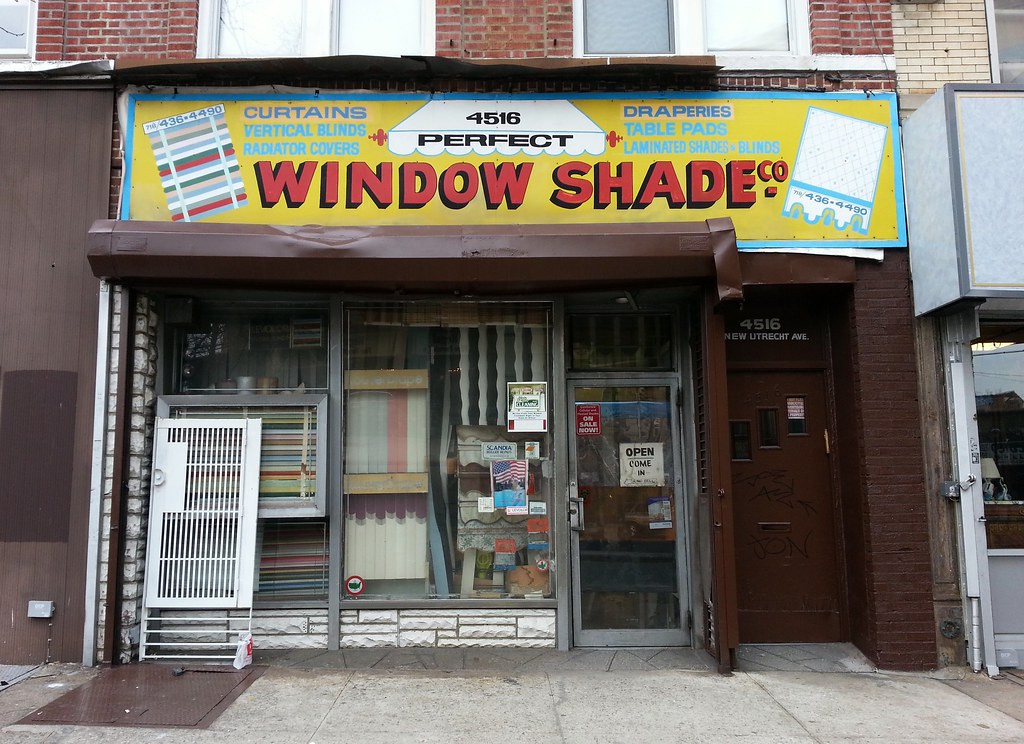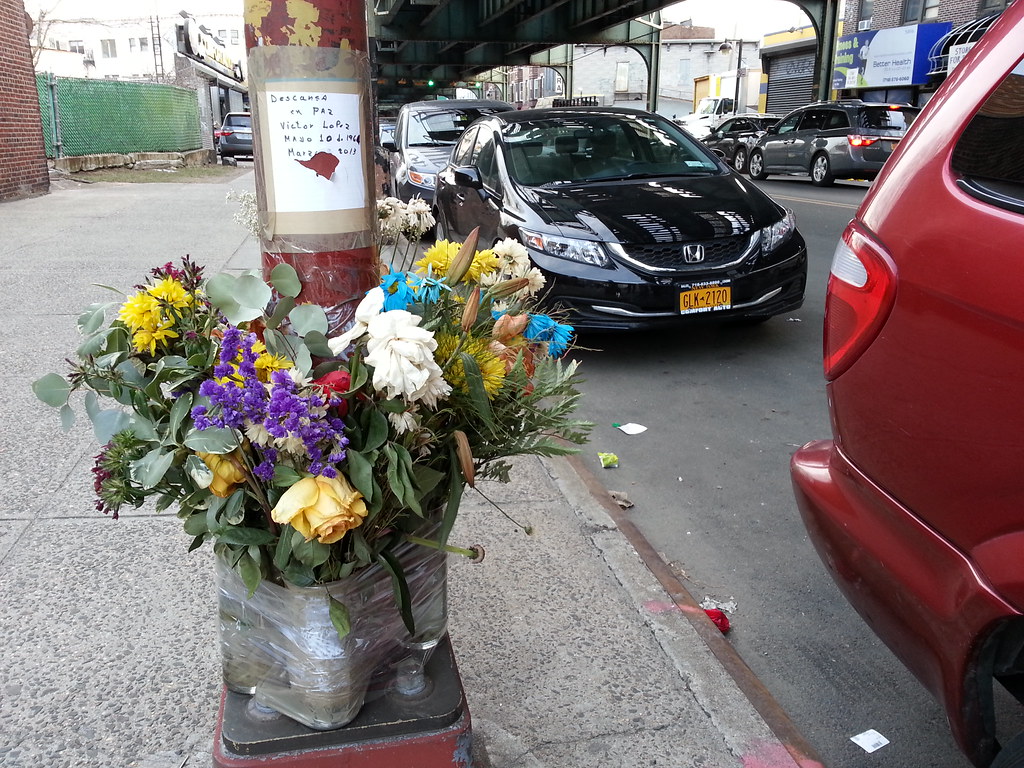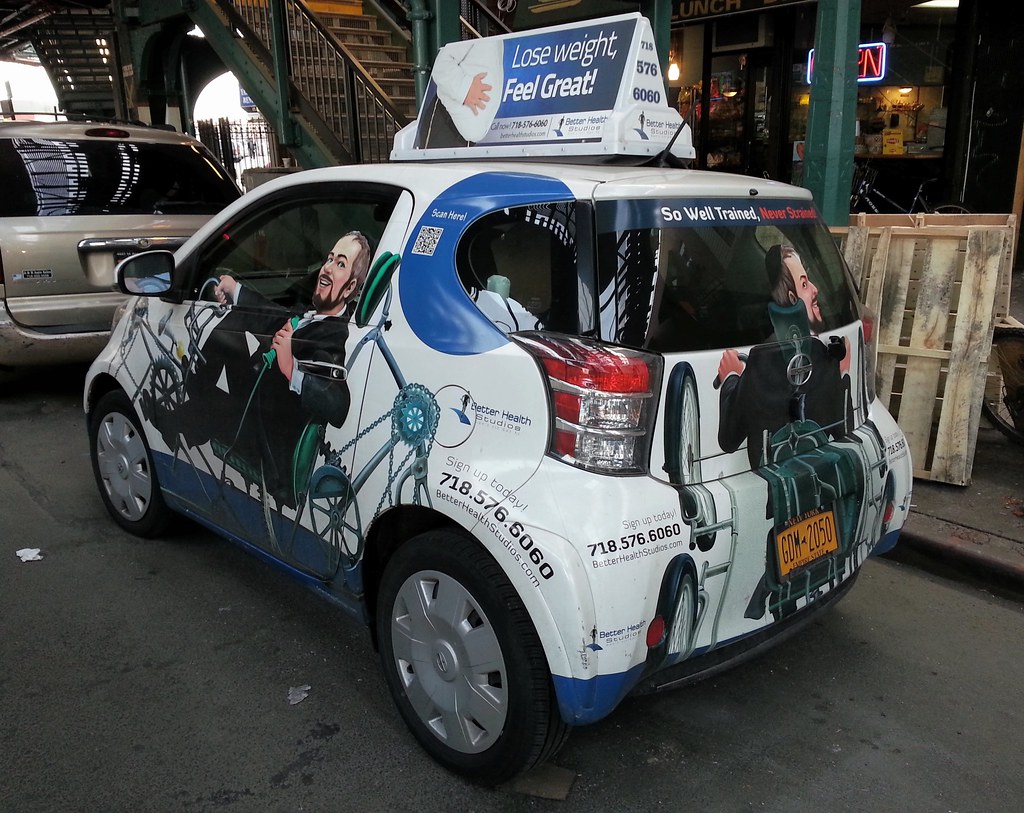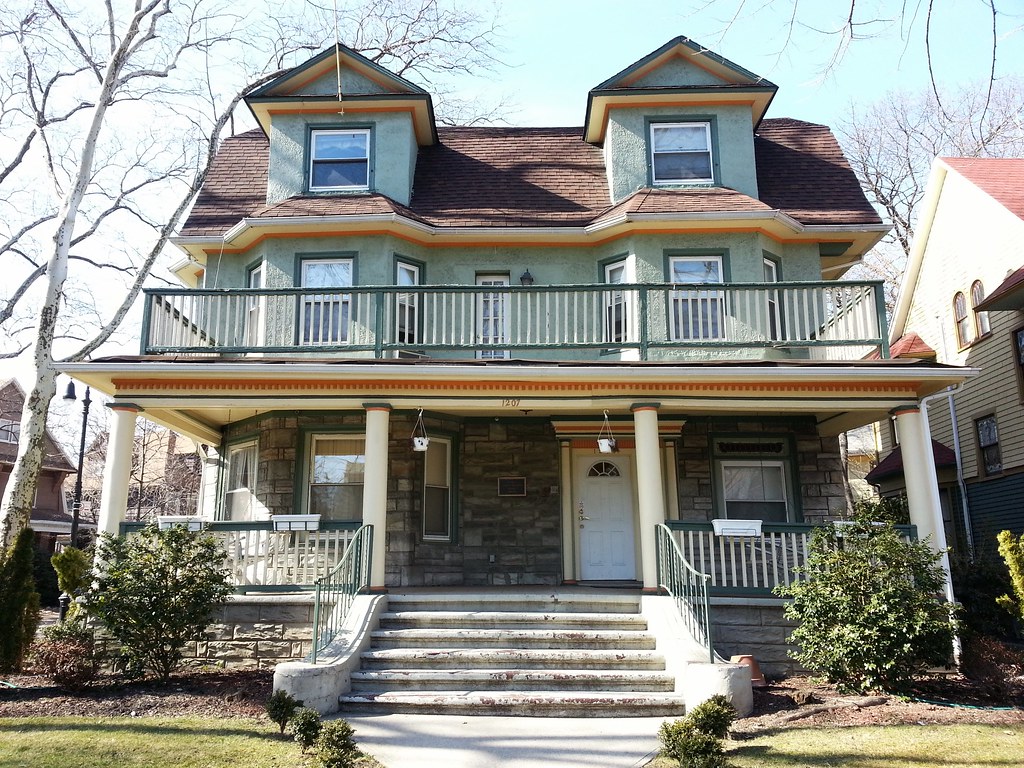
A plaque on the porch identifies this Victorian Flatbush house as the Lillian and Jack Isaacson Residence, operated by AHRC (formerly known as the Association for the Help of Retarded Children).
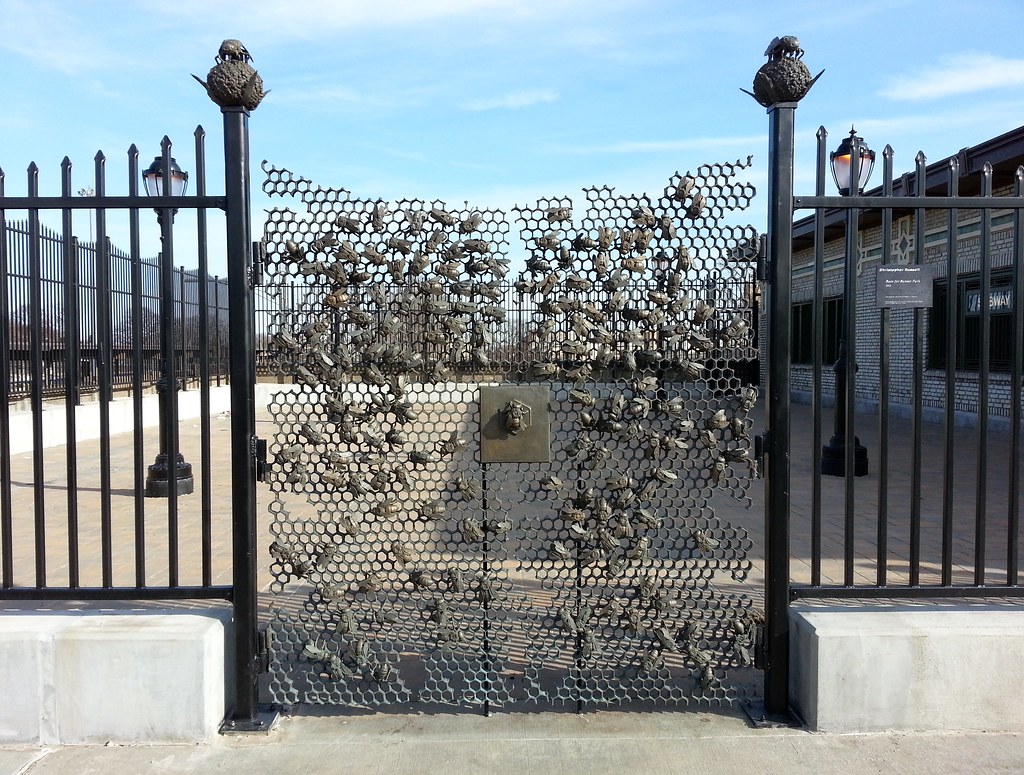
That's the name of this artwork outside the Ninth Avenue D train station in Brooklyn.
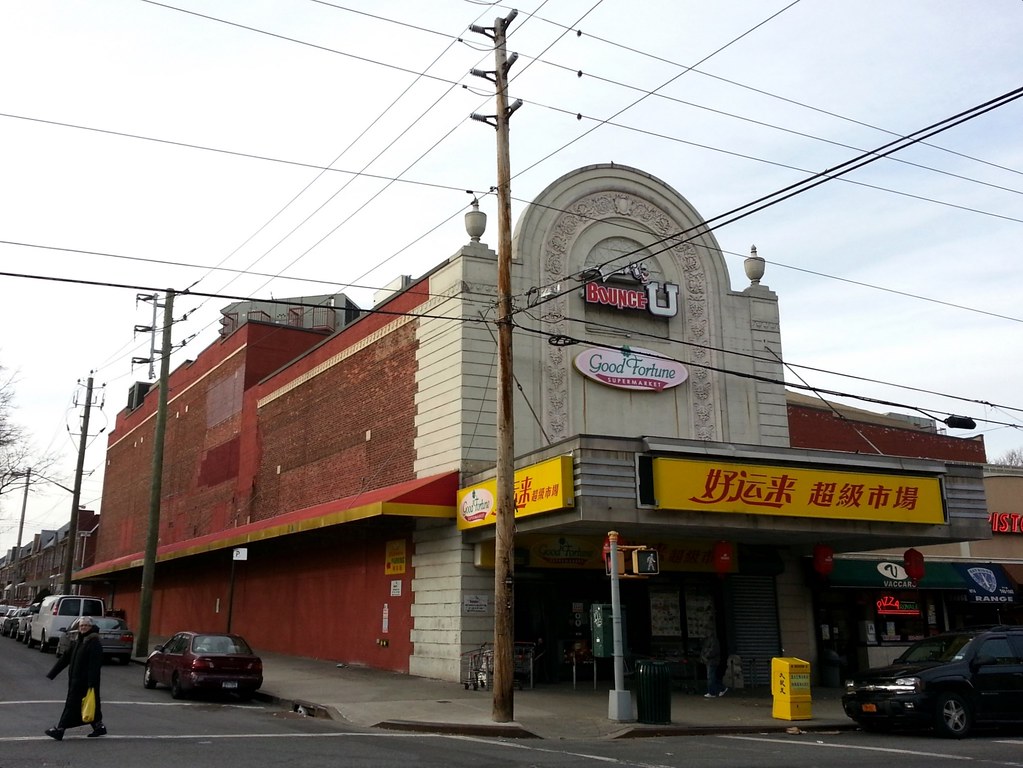
Good Fortune Supermarket and BounceU (the "inflatable party professionals") now occupy this former movie house.
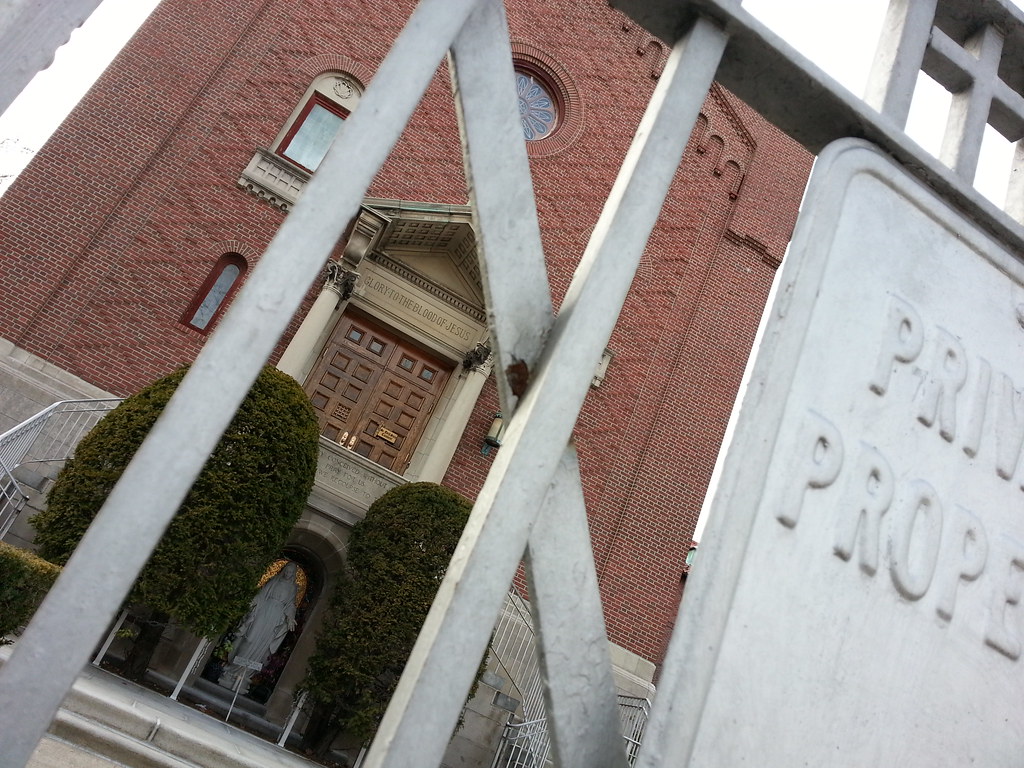
The Monastery of the Precious Blood. Here's a wider shot, and here are some interior photos.
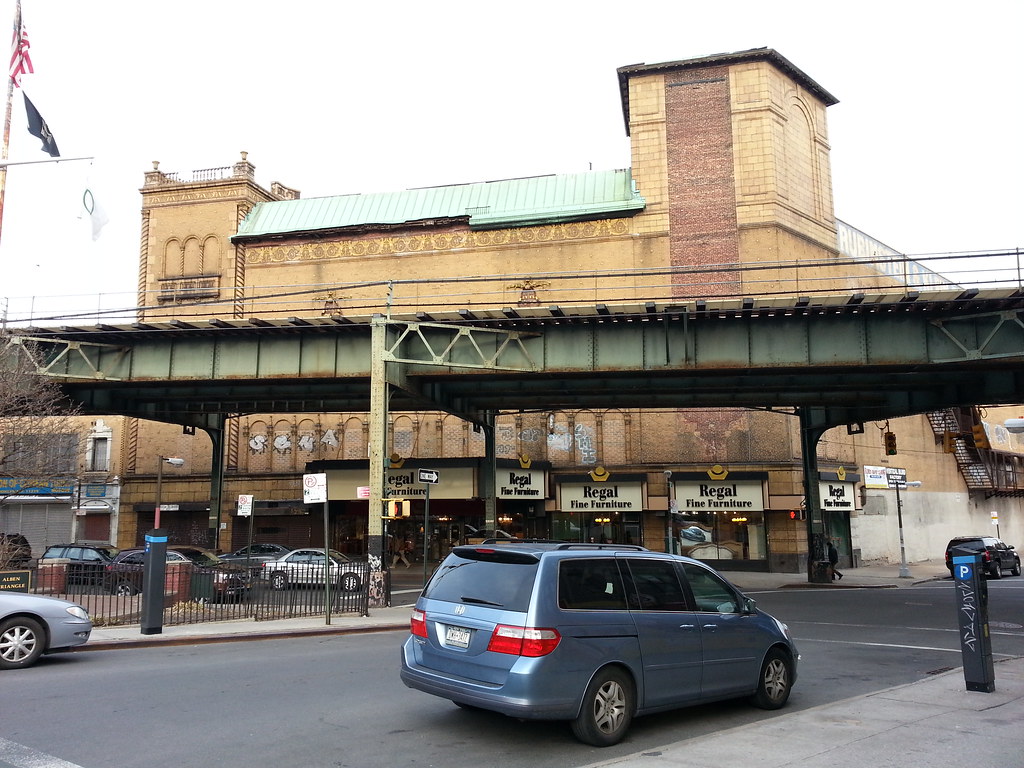
When this former movie and vaudeville palace opened as the Universal Theater in 1927, it was "said to be the first atmospheric theater in New York City", according to an account in the Brooklyn Daily Eagle, which also reported that "an unruly mob of more than 25,000 persons attempted to 'crash the gate' at the grand opening":
Shortly after 6 o'clock several thousand fans had already taken up positions in front of the theater, and before another hour had passed many more thousands had swarmed in the vicinity of the new palace, forming an unbroken line of humanity for several blocks around.In case you're wondering, One-Eyed Connolly (or Connelly) was "the world's greatest gate crasher", a man who "lived most of his life in a strange world, partly in hobo jungles, partly on the fringe, however tawdry, of the glamorous and the famous. Almost always he was in the center of excitement." The schemes he used to sneak into the marquee events of his day were often quite brilliant. For example:
When those in the rear realized that they had no chance of getting in except by bettering their positions, a veritable raid was made on the entrance, and a panic was only averted by the quick action of the management in throwing the theater open to the public long in advance of the scheduled hour. A temporary wooden barricade placed in front of the entrance and supported by the combined efforts of employees and a cordon of police, who were powerless to stem the human tide, was beginning to splinter and give way under the crush when the management stepped in and relieved the situation.
No sooner had the support been removed from the wooden barricade than it was bowled over by the surging mob, which rushed the door and hurtled its way into the richly appointed place, which in a moment's time took on the appearance of an overcrowded stockyard. In less than three minutes nearly 4,000 persons had shoehorned their way into the house, which has a seating capacity of 3,000 . . .
During an address made from the stage during the show [Borough President] Byrne requested the crowd, practically all of whom had done a "One-Eyed Connolly," to reimburse the management as they filed out.
Wanting to see Red Grange play at Illinois, Connelly disdained the tickets the star offered. Instead, about game time, he appeared in overalls carrying a paint bucket and calmly started painting parking lines on the street. When he had finished, he went up to a gate tender and asked, "What else do I paint?" "Don't ask me, go in and ask the boss," said the gate tender.A former boxer himself (which is how he came to be one-eyed), Connolly wanted to see the Jack Johnson-Tommy Burns heavyweight title fight in Sydney in 1908. He actually had to pay to get to Australia, exhausting the savings he had accumulated as a newspaper vendor. Once there, however, he walked into the stadium for free in the guise of a fireman (wearing a helmet he had just stolen) and watched Johnson defeat Burns to become the first black heavyweight champion of the world. But how would Connolly make it back to the States with no money?
Getting home for free was simple. In one of Sydney's principal theaters, which Connelly crashed, the crowd started to sing "God Save the King." Connelly howled derision and insults. The Australian police took him before a magistrate, where he made a fiery speech identifying himself as an American Communist. Australia forthwith deported him to the United States.But enough about ol' One-Eyed. Less than a year after that mob scene at the opening of the Universal, the theater was acquired by Loew's and reopened as the Loew's 46th Street. It would continue operating under that name for almost four decades before becoming an independent theater for a few years in the late '60s and then a rock concert hall for a few more in the early '70s.
During its time as a rock venue, the theater was known as the 46th Street Rock Palace, and then later as the Bananafish Garden, a name likely taken from J.D. Salinger's short story A Perfect Day for Bananafish. It's hard to imagine such a place existing in decidedly unhip Borough Park, but some big-name acts played here in those days (though not necessarily at the height of their big-namedness), including the Byrds, the Grateful Dead, and Jerry Lee Lewis. Here's a clip of a Mahavishnu Orchestra show at the Bananafish in 1973.
Since the mid-'70s, the theater has been home to a furniture store, with the lobby turned into a showroom and the auditorium used for storage. You can find a few shots of the lobby/showroom here, and be sure to check out these beautiful photos of the auditorium in its current state — deteriorating but still pretty magnificent.
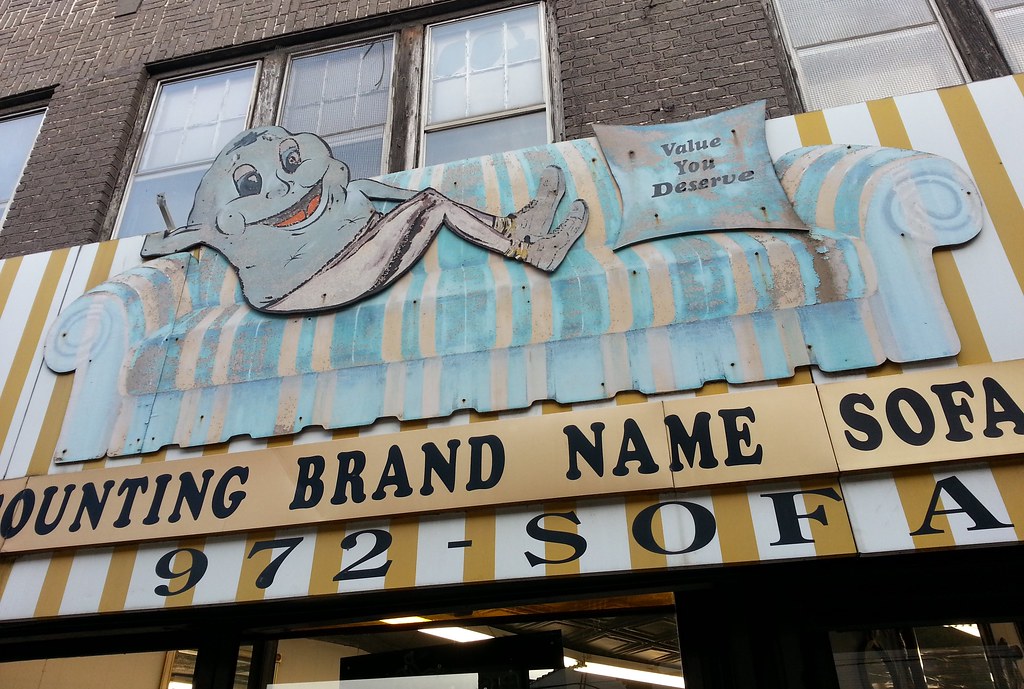
There was once a time when this grimy tuber could be seen brightening everyone's day with a cheery thumbs-up sign, but then he lost his right arm in a presumably tragic accident sometime in the past few years. A Hasidic guy walking by saw me admiring the sign and told me he designed it some twenty years ago.

